Bromeliad Care: How to Successfully Grow Bromeliads Indoors
Bromeliads are tough, interesting to look at, and don’t require much fussing over at all. That’s just the kind of plant I want to add to my collection of tropical beauties. They’re very popular house plants so I want to share with you what I’ve learned over the years about bromeliad care indoors.
Oh bromeliads, how I love you. I was happy to be able to grow a variety of these pineapple relatives in my Santa Barbara garden (warning, this is an old post with old photos!) as well as in the house. Now that I live in the desert in Tucson, AZ, I grow them exclusively indoors.
I started out my post-college horticultural career as an interior plant technician, which is a fancy name for someone who runs all over the place and takes care of plants in offices, lobbies, malls, hotels, and even airports. Granted these aren’t the most welcoming environments for plants that are native to the subtropics and tropics, but in all cases, the bromeliads certainly held their own and did just fine.
They were sold as “color plants” (in 4″ and 6″ grow pots) and certainly were a lot more long-lasting and much more forgiving than begonias, azaleas, mums, and the like. By the way, Kalanchoes, Calandivas, and Phalenopsis Orchids were on the list of long-lasting blooming plants too.
Bromeliad Care Indoors
This is a general bromeliad care guide for growing bromeliads in pots. You’ll find specific types of bromeliads, along with care guides, listed right below.
Note: This post was originally published on 1/13/2016. It was updated with more info & new images on 11/7/2022.
I’ve not only cared for and placed hundreds of bromeliad plants on commercial accounts but I’ve also grown them as houseplants too. I’m happy to share what I’ve learned with you.
There are so many types of bromeliads, species of bromeliads, and bromeliad varieties. Listed below are the ones most commonly sold in the houseplant trade. You’ll find links to their care as well as photos of them throughout this post.
Bromeliad Plant Care Guides
Aechmea fasciata (Silver Vase Plant / Urn Plant)
Tillandsia cyanea (Pink Quill Plant)
Vriesea splendens (Flaming Sword)
Cryptanthus bivittatus (Earth Stars)
Light
Like many other tropical plants growing indoors, bromeliads like nice, bright indirect light but no prolonged periods of the hot sun. In nature, they grow under the canopies of other plants on the forest floor where it’s bright but the direct sun is filtered through.
They’ll survive for a while in lower light levels but need enough light to bring out and keep the color and also to initiate flowering and pupping (their process of making babies – see Propagation below).
It’s a bit vague without getting into foot candle measurements but you want your bromeliad to be somewhere near but not in a window or windows with a west or south exposure. During the darker months, you may have to move it to a spot that gets more light.
In commercial accounts, they were rotated out on a monthly basis so the exposure wasn’t as big a deal. Mine that grew outdoors were in partial shade and out of direct sunlight.
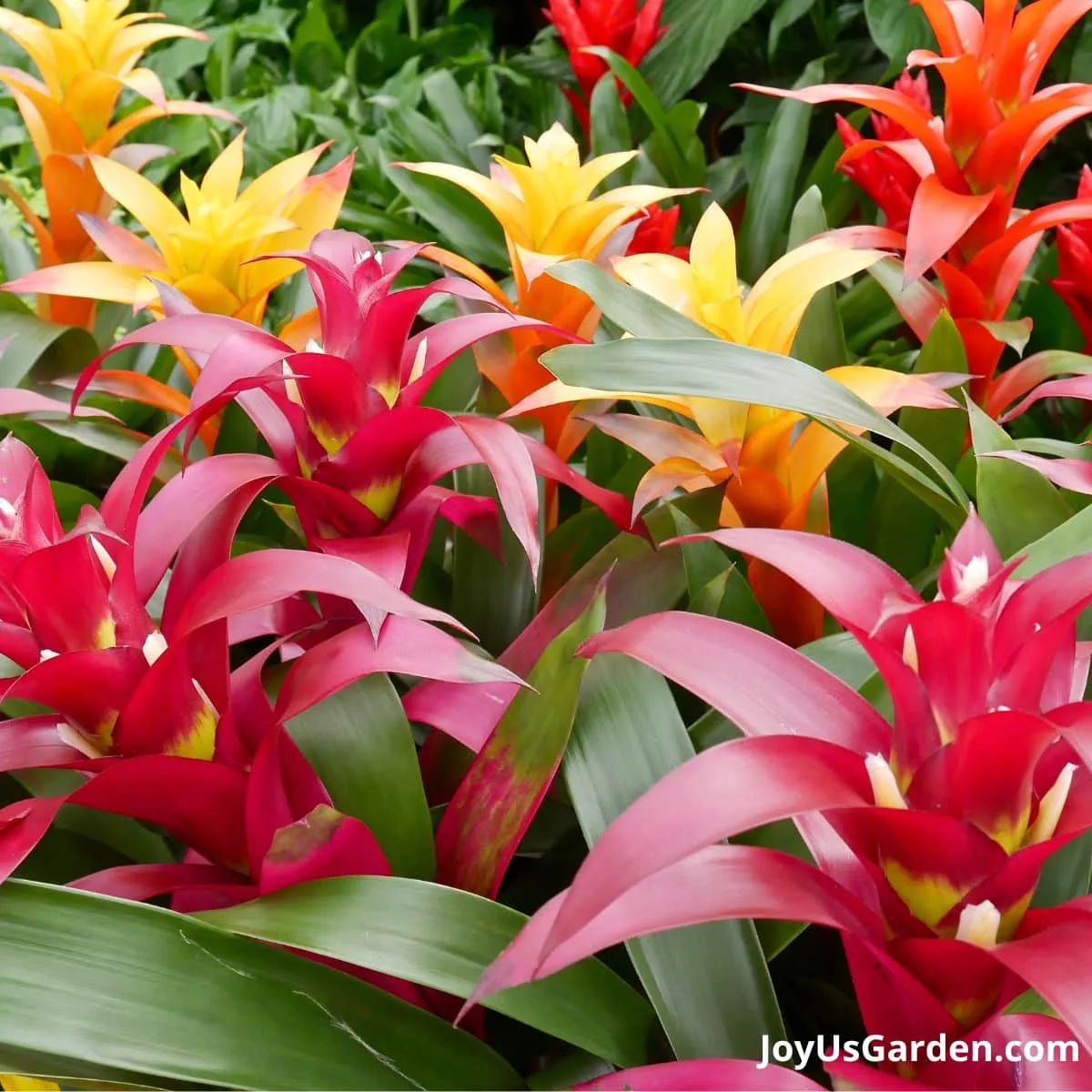
Watering
I’ve found that bromeliads like a good watering every month. Water the growing medium thoroughly and then let it all drain out. Make sure the pot has at least 1 drainage hole (preferably more) so the water can flow right through.
Depending on your home’s environment, you might need to water less often. And, in the winter, I water less often.
The majority of them are epiphytic bromeliads (meaning they grow on other plants, rocks, logs, etc, and not in the soil) so never keep them soggy or let them sit directly in water. This will lead to rot as the roots are primarily for anchoring.
Keep the cup, which is the center of the plant aka the tank or reservoir, 1/4 to 1/2 full of water at most. Be sure to flush out the cup every month or two as bacteria can collect in the dirty, stagnant water.
Another way to water bromeliads is to mist the central cup and the leaves and surface of the mix.
In the cooler, darker months back off on the watering, to maybe every 2 months, and keep the center cup 1/4 full to almost dry. You don’t want your bromeliad to rot.
Bromeliads with a cup (like Aechmeas and Neoregelias) are susceptible to salt damage which occurs because of the water quality or over-fertilizing.
Although most tap water is just fine, yours could possibly have high amounts of salts and minerals, so in that case, use rain, filtered, or distilled water.
Here’s more on Watering Bromeliads Indoors. We have guides on Watering Indoor Plants and Indoor Plant Care in Winter which you’ll find useful if you’re a beginning gardener.
Soil / Repotting
Bromeliads love rich, organic matter in their soil but they must have excellent drainage. If you have cymbidium orchid mix on hand, then you can use it for potting up your bromeliads too.
I use a mixture of DIY Succulent & Cactus Mix, orchid bark, worm castings, and compost. Another good additive is coco coir, which is a more environmentally friendly alternative to peat moss.
Bromeliads have a small root system so you don’t have to worry about repotting them too often. Every four to five years is probably just fine. And, you only need to go up 1 pot size.
It’s best to repot them in spring and summer into early fall.
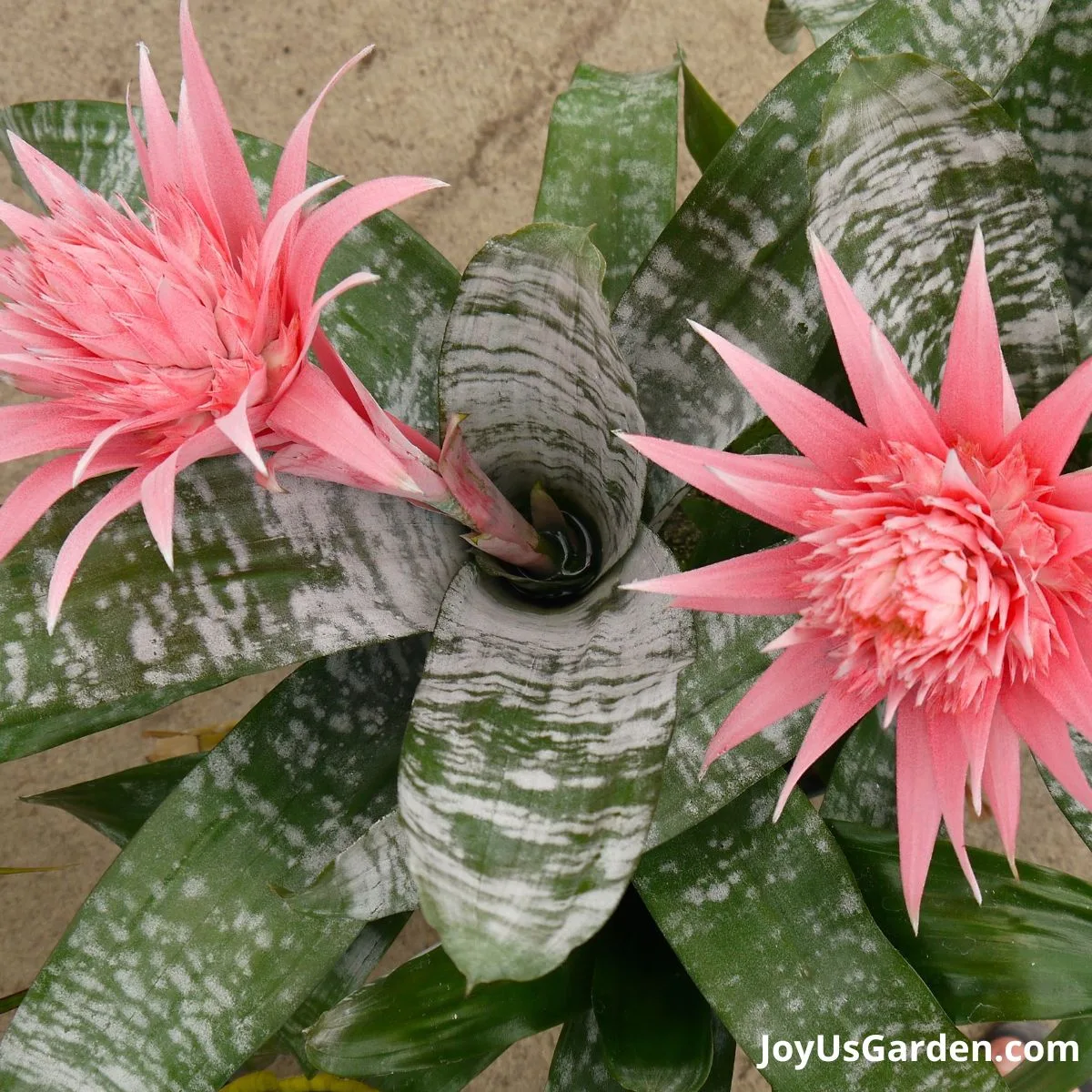
Fertilizing
Bromeliads aren’t fussy and don’t need much if any fertilizing. If you feel the need to feed them, then use a balanced liquid fertilizer or an all-purpose orchid food diluted at half-strength in the spring or summer.
There are fertilizers that are specially formulated for bromeliads. Whichever you decide to use, don’t over-fertilize them, which means using too much or doing it too often.
Temperature / Humidity
Temperature isn’t too important as bromeliads tolerate a wide range of temps. If your home is comfortable for you, it’ll be so for your bromeliads too.
Mine grew outdoors in Santa Barbara and the winter months got into the 40s and into the 80s/90s in the summer/fall.
Humidity is more important as these plants are native to the subtropics and the tropics. They grow best in high humidity but seem to tolerate the dry air in our homes just fine.
If your home is really dry, then it’s a good idea to mist them a couple of times a week or grow them over a tray filled with water and pebbles to up the ante a bit on the humidity.
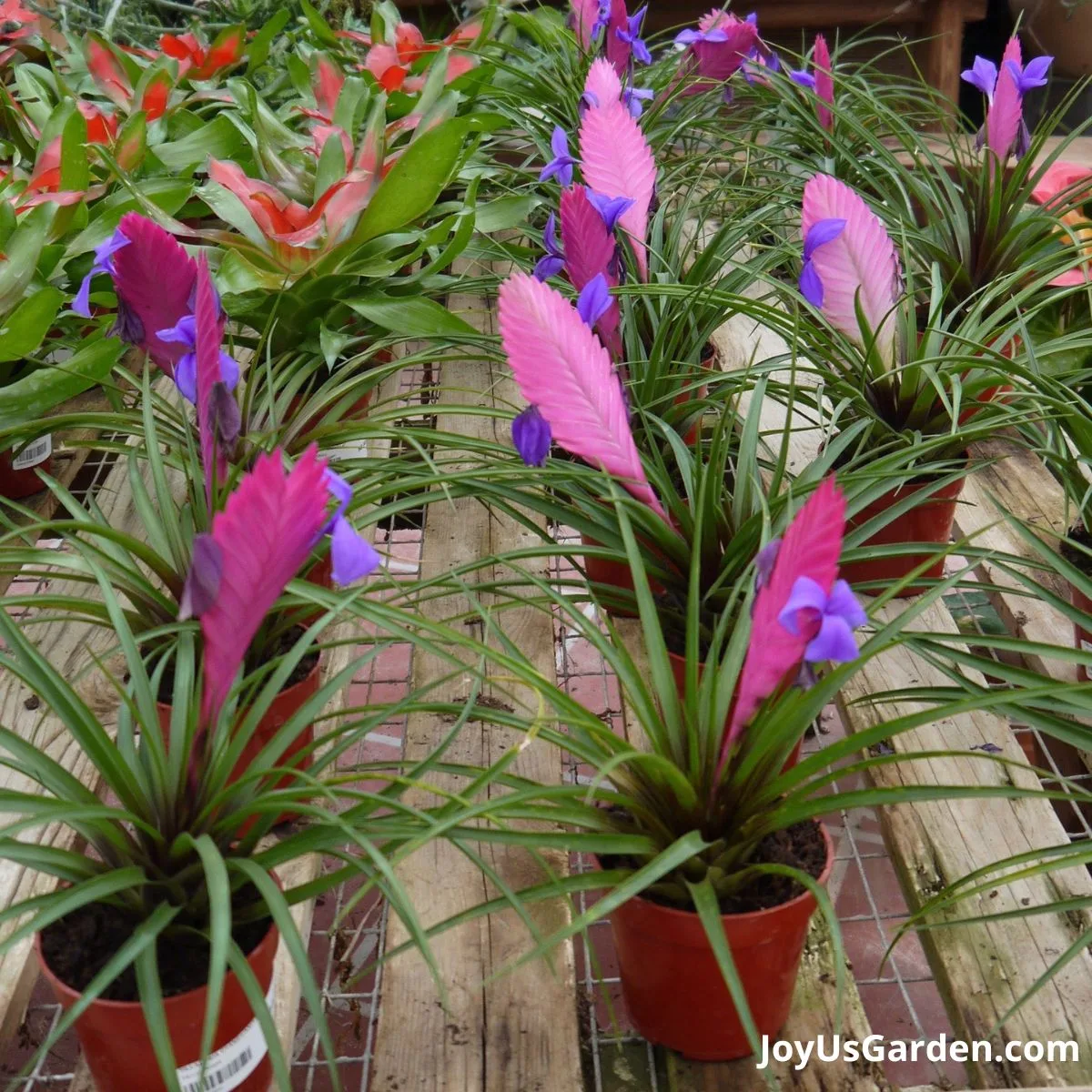
Propagation
The easiest way to propagate bromeliads is by removing the pups (the little babies that appear off the base of the mother plant) and replanting them.
If you’re new to this, you might want to wait until those new plants are a fairly good size so roots have formed. You can also leave them attached to the mother and cut back the growth as it dies. Yes, the mother plant dies after flowering the the good news is, babies will form.
I’ve also removed bromeliad pups when they’re smaller and planted them with success. Growers also propagate them by seed but it’s a much more tedious process.
More details for you on Propagating Bromeliads including how to remove and pot up the pups.
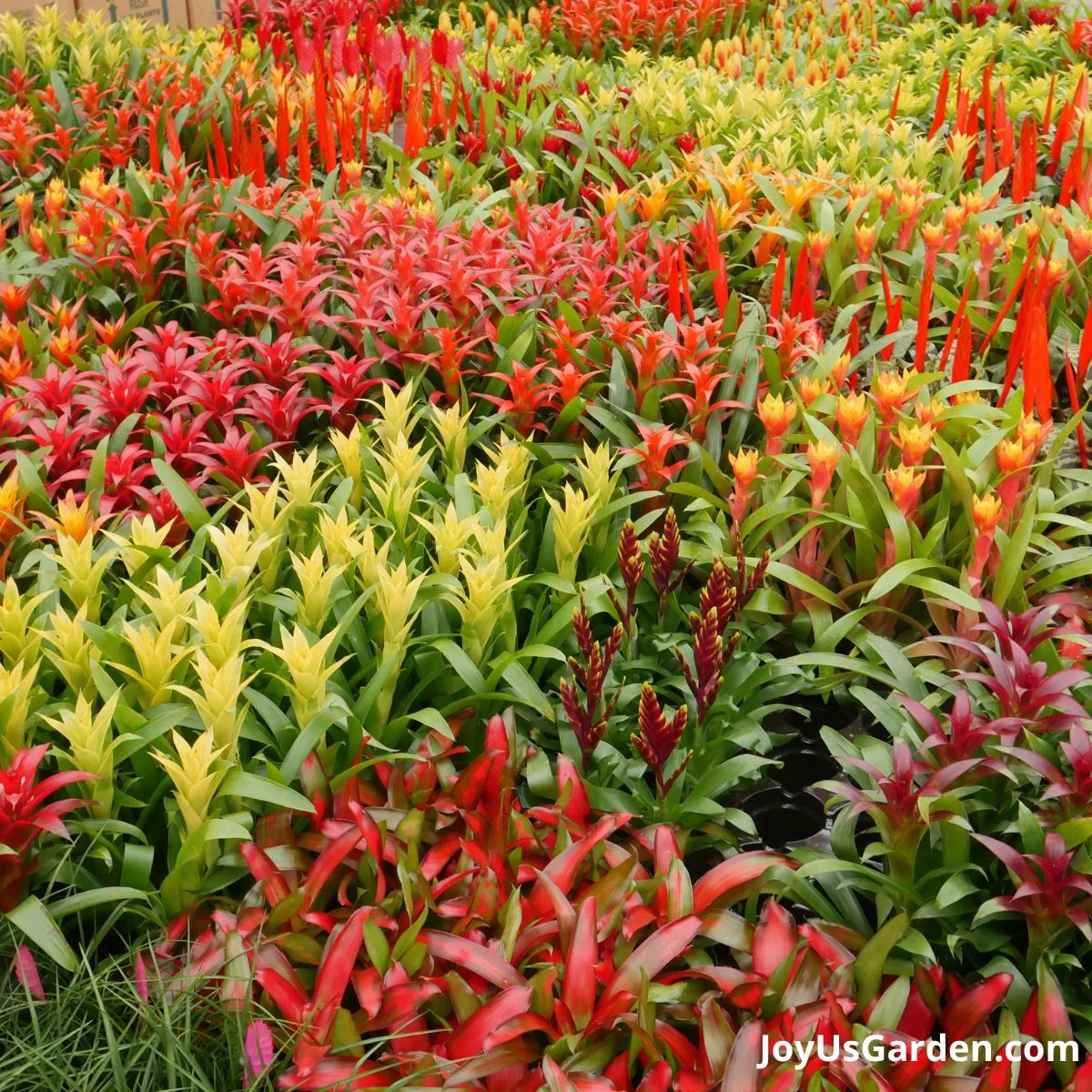
Pruning
These plants require very little pruning which makes me very happy. A bottom leaf will occasionally die – simply remove it.
When the bromeliad flower dies, like an Aechmea, Guzmania, or Pink Quill, then prune it off after it has died. At some point, the parent plant will die (but don’t be sad – remember, I said new babies will appear) and you’ll need to cut that off after it’s completely gone if you’re leaving the pups attached.
Flowers
Bromeliad flowers, depending on the genus and/or species, come in a variety of colors. Some have a stalk with a large showy flower atop it while others have small flowers which appear deep inside the cup.
In case you have read the above few paragraphs, the mother plant will die after flowering. The post below will give you more information on this.
Here’s why Bromeliad Flowers Turn Brown and what to do about it.
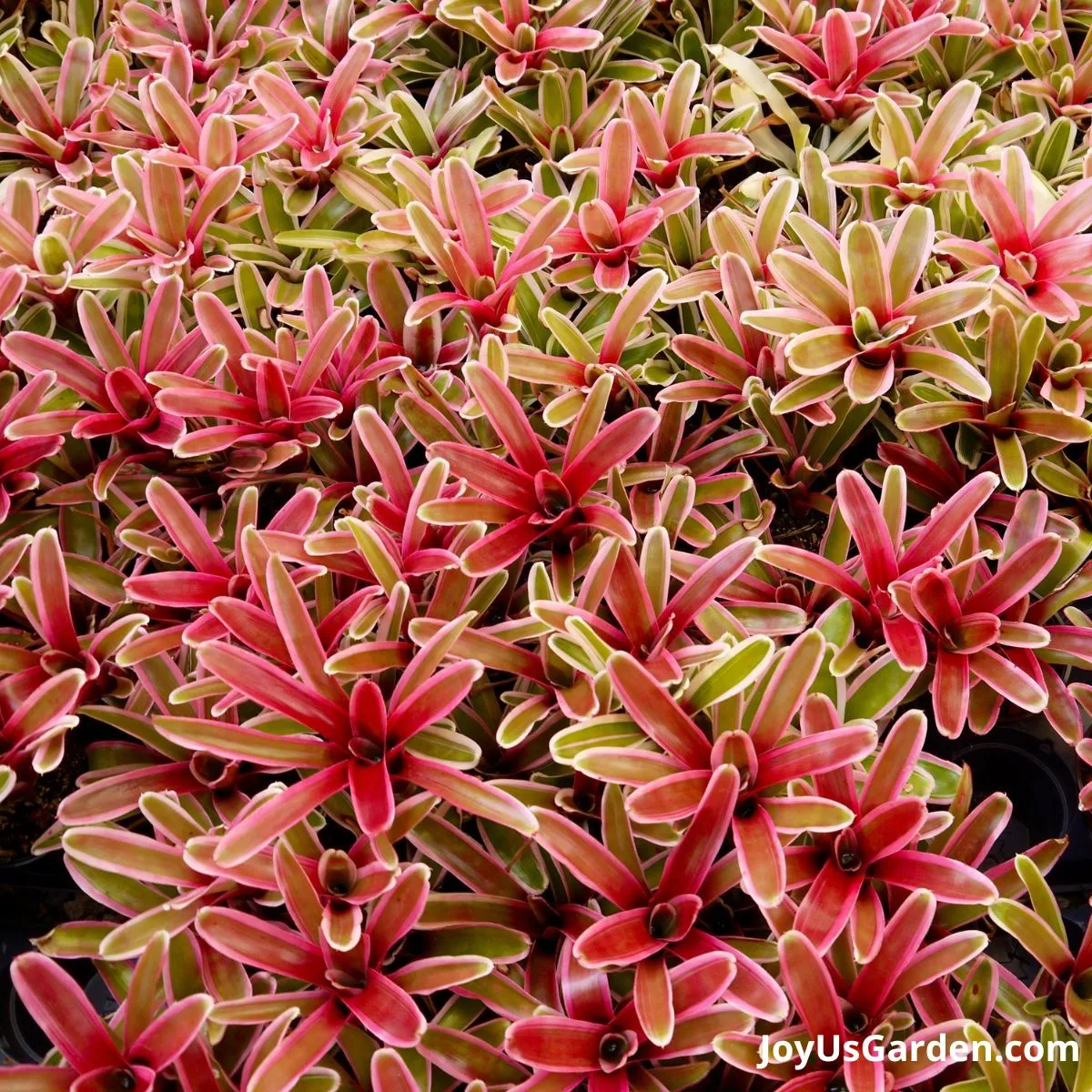
Pests
Mine have never gotten any pests whether they were growing indoors or out. They’re most susceptible to Spider Mites, Mealy Bugs, and Scale. You can wipe the mealy bug off with alcohol and a cotton swab.
Scale can be removed with your fingernail or a dull knife. Please don’t use an oil spray (like horticultural or neem oils) on your bromeliads as they can smother the plant if used too often.
Pet Safety
The good news is that these plants are considered non-toxic. I get my information on this subject from the ASPCA website. Here’s a heads-up if you have kitties like me. They love to chew on those crunchy leaves!
Some Of Our General Houseplant Guides For Your Reference: Guide To Watering Indoor Plants, Beginner’s Guide To Repotting Plants, How to Clean Houseplants, Winter Houseplant Care Guide, Plant Humidity: How I Increase Humidity For Houseplants, Buying Houseplants: 14 Tips For Indoor Gardening Newbies
Bromeliad Care Video Guide
Bromeliad Plant Care FAQs
How long does it take a bromeliad to bloom? Do bromeliads only flower once? What do you do with a bromeliad flower after it dies?
It takes a bromeliad about 5 years (sometimes longer) to bloom.
Yes, they only flower once and the parent plant eventually dies.
You cut the flower stalk all the way off.
How do you get a bromeliad to rebloom? Why is my bromeliad not blooming? How do I get my bromeliad to bloom again?
You don’t the bromeliad to rebloom. The parent plant will put out pups as it’s starting the process of dying, or just after. The pups will eventually bloom, but it usually takes a few years.
Your bromeliad may not be blooming because it’s too young. Or, the light levels are too low. Guzmanias, aechmeas, and pink quill plants are commonly sold with the flower stalk formed and showing color.
Same answer as the 1st question (you don’t), just different wording!
Do you water bromeliad from the top or bottom? How often do you water a bromeliad? Do bromeliads need water in the cup?
I always water mine from the top.
I keep water in the cup and water the potting mix every 3-4 weeks. I live in the desert so you may have to water less often depending on your climate. I watered my bromeliads less often in Santa Barbara where it was more humid.
Bromeliads, when growing in their native environments, get water from rain falling in the cups and over the foliage. The roots are primarily for anchoring. I keep the cups 1/2 full of water and that works in my desert climate. If you live in a more humid climate, keep the cup 1/4 full at most. In the winter months, you may have to keep it dry in those darker, cooler months to keep the center cup from “mushing out”.
Can bromeliads be outside?
Yes, they can grow outdoors year-round in temperate climates. I grew quite a few of them in my Santa Barbara garden. I planted them in their grow pots to help prevent root rot.
I lived 7 blocks from the ocean so the fog was their primary form of watering.
Are bromeliads easy to care for?
Bromeliad care is easy. I’m currently growing two of them and they require little attention.
In conclusion: Bromeliads do best in bright light (indirect sunlight is fine), well-drained soil, and like to be watered sparingly.
Bromeliads make fine houseplants and are as easy to care for as it gets. As a matter of fact, there are a couple of bromeliads I’ve had my eye on so I think I need to add to my collection soon!
Happy Gardening,

This post may contain affiliate links, you can read our policies here.
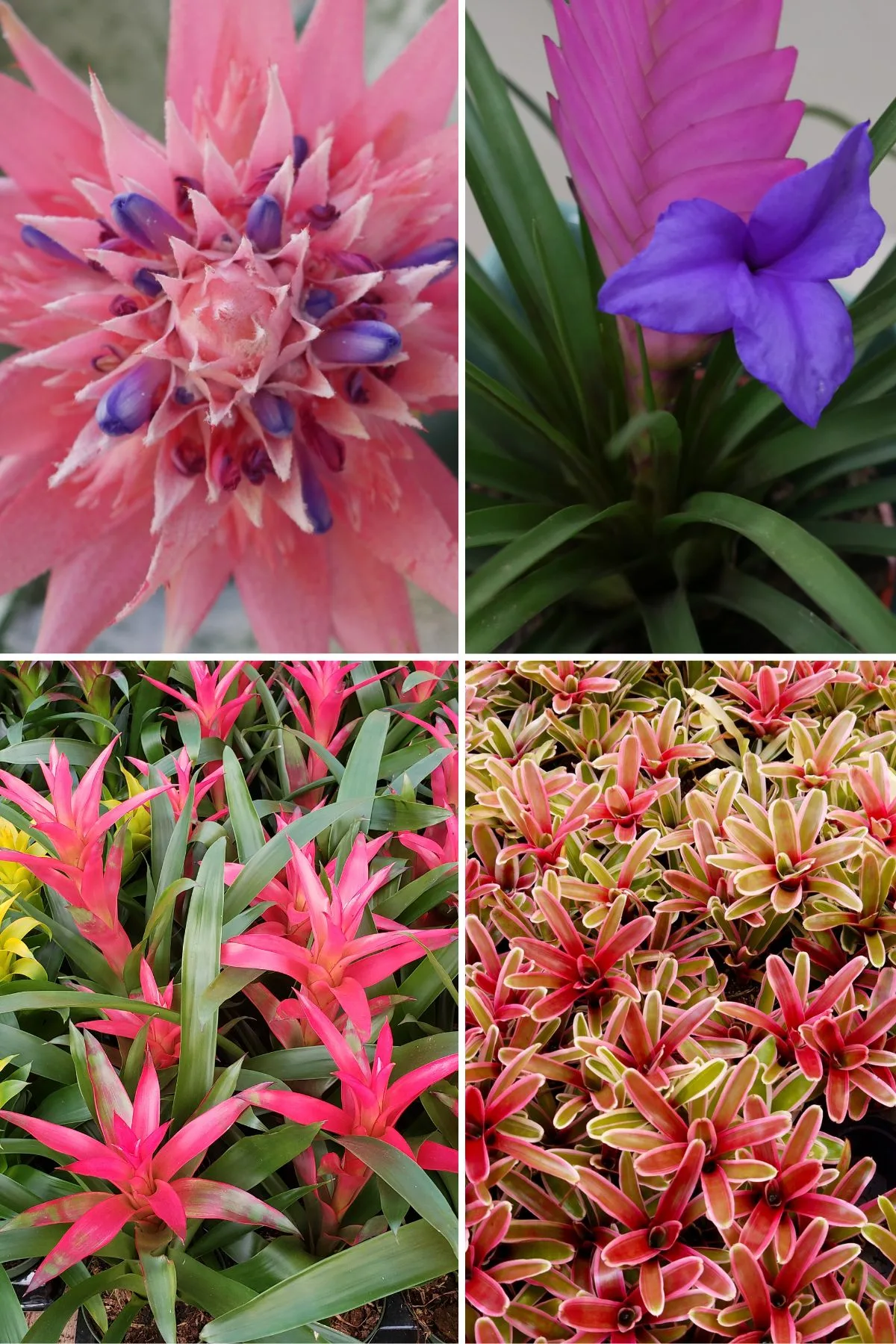

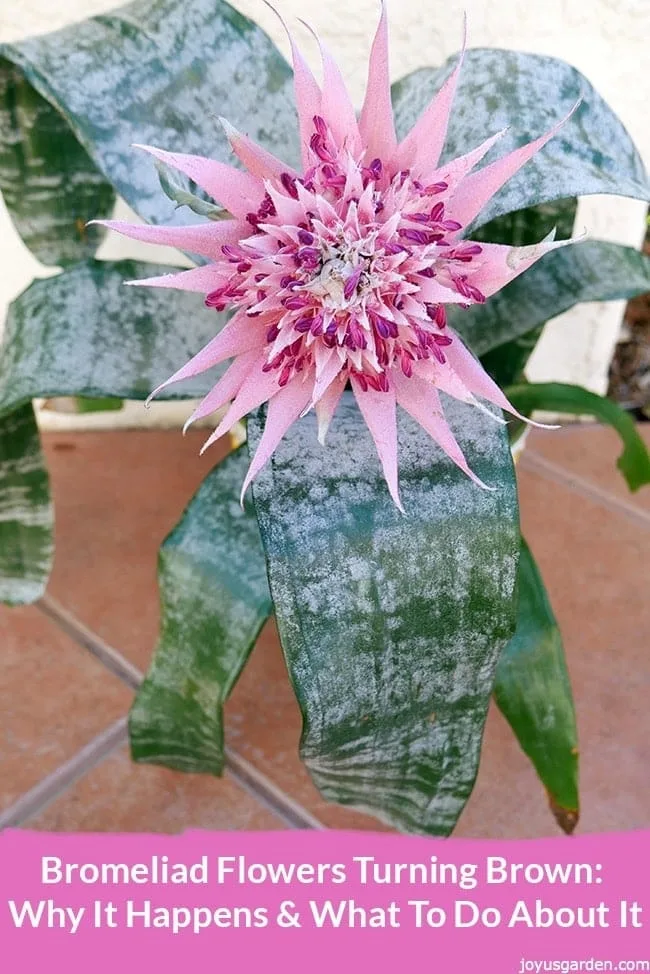
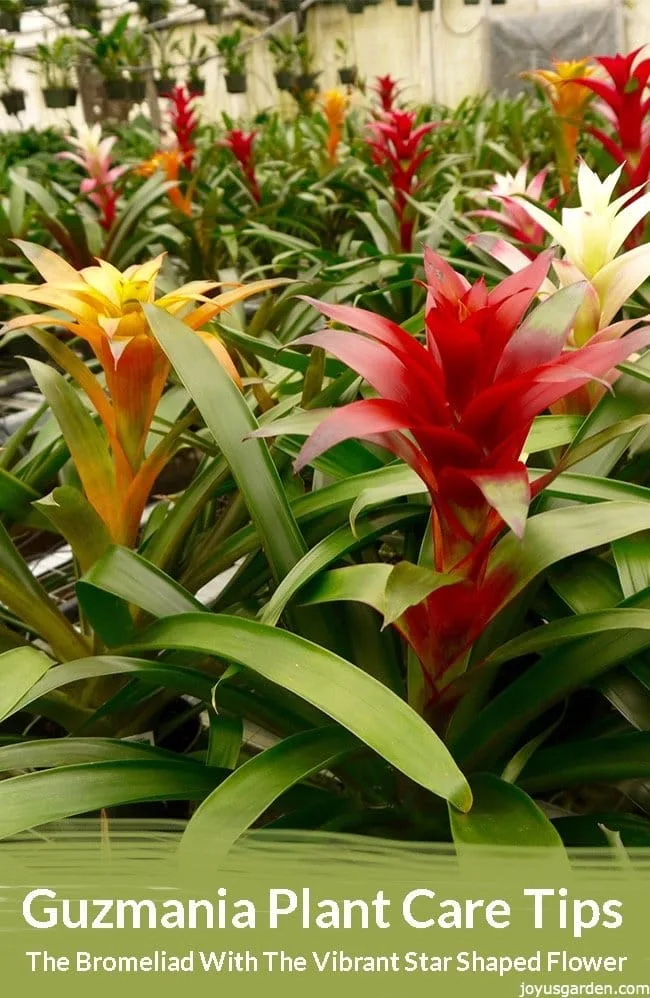
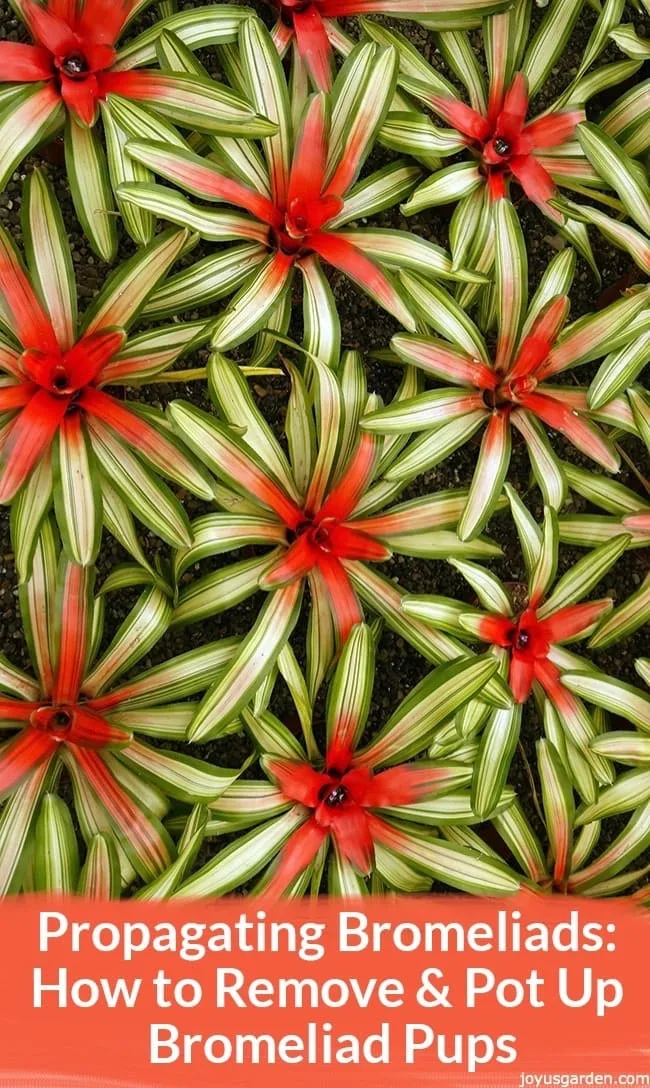
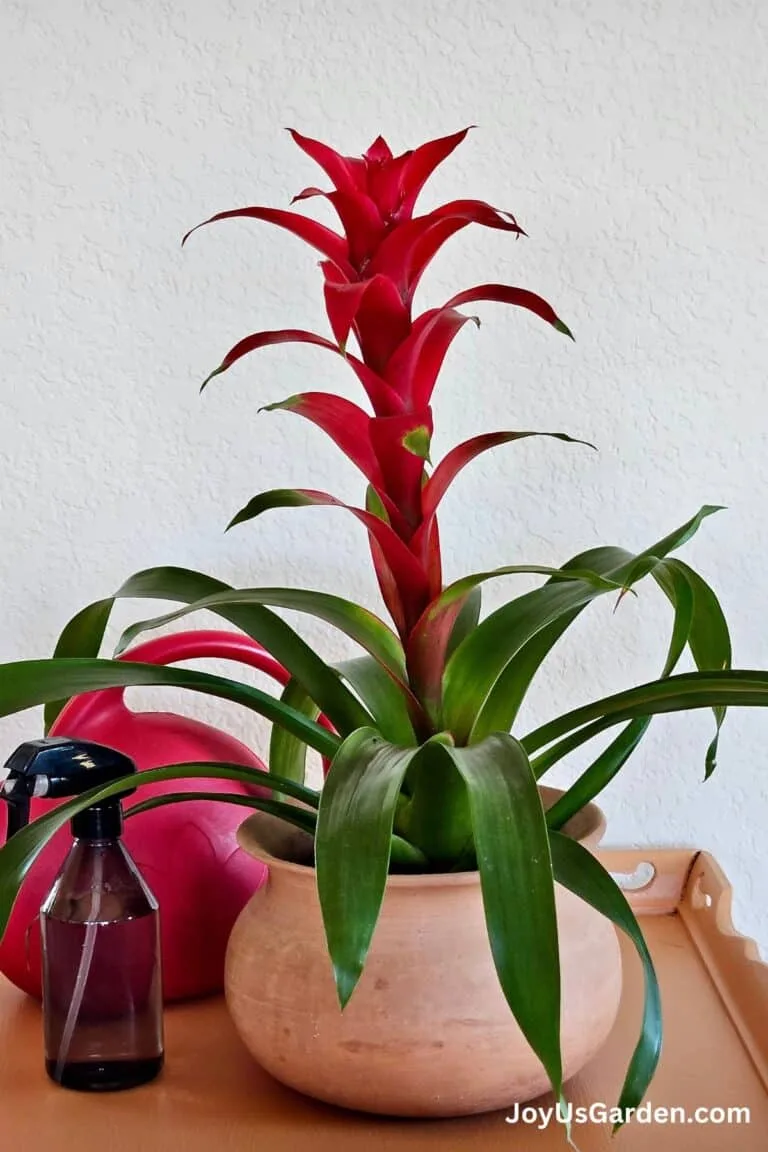
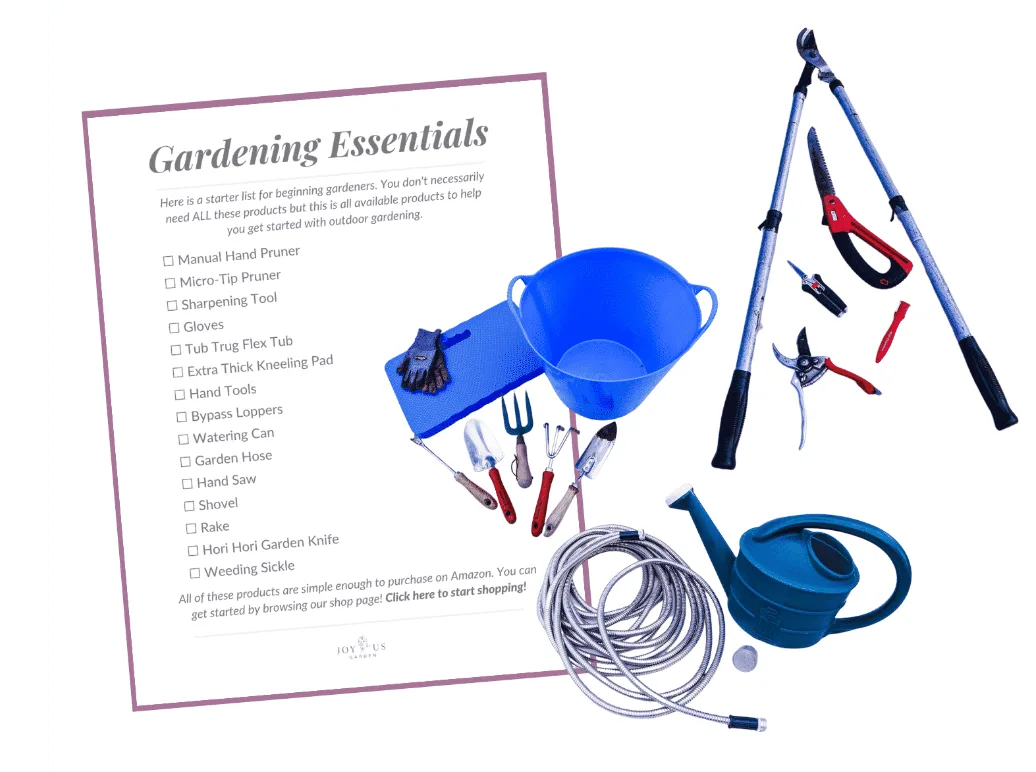
Thank you for sending beautiful colorful plant pictures.
I’m enjoying.
The first time I knew your video was about the gorgeous bougainvillea video in your garage. I was so fascinated.
I can’t forget it!
Hi – I’m glad you’re enjoying the pictures. I love bromeliads, especially those ones with the colorful foliage. I just pruned that Bougainvillea a few weeks ago – it’s still blooming away! Best, Nell
i have some bromeliads ,but didnt find the types . how can i identify my bromeliads types?
Hi – Bromeliads commonly sold as houseplants fall into the following genus’: aechmea, guzmania, neorgelia & tillandsia (cyanea). You can do an internet search & see which you have. Nell
Thanks so much for the tips! I just saw Aechmea fasciata at my local grocery store the other day and was entranced! I was afraid to buy it because I thought i’d just kill it, but with your tips I think i’ll give it a try!
Hi Adrienne – Aechmea fasciata makes a great houseplant. Give it nice bright light & don’t over water it. We used them a lot when I was an interiorscaper! Nell
May 18, 2017
Nell
I just received a Pink Quill Plant, The info tag it does not say how tall it will get. Could you please let me know this information?
Thank you,
Hi Denise – Mine right now is about 7-8″ tall & about 8″ wide. They don’t get much taller, but as they grow & pup, they spread. Just to let you know, they’re relatively slow growing. Nell
I love your videos! I lived in Tucson but now I am in Upstate NY. I recently purchased Neoregelia Mendoza, Billbergia Casablanca,Werauhia Sanguinolenta, Aechmea Frappuccino, along with some others… I am wondering what would be best??? I South window with no direct sunlight but right near window or West window with an hour or two of direct sunlight?
Hi Johnny – Well thank you! I just moved to Tucson last year so all’s still new to me. I went to college in upstate NY by the way. The west exposure would be best but near the window, not in it. In the brighter summer months the south exposure would work, & in the darker winter months (which I remember!) you might consider moving them to the west window. Hope that helps & happy gardening! Nell
I keep mine on my screened in porch & seems to be doing ok, but it doesnt have the beautiful flower. Will they come out eventually?
Hi Sherry – Just know that bromeliads don’t flower until they reach at least 3-6 years old. Also, if the light is too low, they won’t flower. Nell
Is there a certain “easy” type of bromeliad to grow? I like big flashy colors.
Hi Daniel – I think all bromeliads are easy. Some do better in lower light than others. The Guzmanias have flashy flowers (which last about 4 months) but the foliage is solid green. The neoregelias come in some flashy foliage colors & patterns. Nell
Hi, l just bought this plant. There are 3 adult bromeliads in one pot. Is this ok or should l separate them. Each mother bromeliad is flowering. I live in Ontario Canada.
Hi Beth – It’s fine because bromeliads don’t have an extensive root system. Just know that they’ll eventually die after flowering & pups will appear that you can then propagate. Nell
Hi…. great article…We have a stone fireplace and I’m wanting to introduce some moss, lichen and some bromeliads into to the cracks and seams of the stones (indoors). Given proper care, what do you think? Do you have any suggestions outside of the care instructions in this article.
Hi Arthur – Thank you. It should work out if you have good strong natural light but not direct sun & if the stone on the fireplace doesn’t get too warm. You’ll need to mist them 2-3 times per week because it’ll be hard to keep water in the urns. Remember that the mother plant dies after flowering so you’ll need to cut it away while or after it’s turned brown. Hope that helps! Nell
This is awesome for projects like biome project!
Braden – For a tropical or sub-tropical biome! Nell
Hi Nell – I too have been an interior landscaper (30 years.) When we started to use broms in the ’80’s, we quickly found that keeping water in the cups – which was always the recommendation – would almost always lead to plants’ rotting. We quickly ended that practice, and watering the soil was all that was needed. I always advise people to water them as if they were cacti, and NEVER put water in the cups – talking about indoor plants here. I’m curious as to why you are telling people to keep water in the cups.
Hi Marlie – Yes, bromeliads are actually fairly drought tolerant & prefer to be on the dry than wet side. I keep water in the urns to the level of about 1/4 full. In lower light conditions, keeping the urn full can lead to rot. I filmed a video on how I water my bromeliads a few weeks ago & will be posting it soon. Nell
I recently separated two pups from the main plant, but hardly any roots stayed on the pups.
Can the pups be placed in water until roots develop? Thank you.
Hi Jack – No, bromeliads are epiphytes so placing the pups in water isn’t a good idea. You can place them on moss or on top of a very light mix & root them that way. Slightly dampen as needed. Nell
Hello! I bot a bromeliad at a store awhile ago on a whim, and by the time I realized what I was dealing with, it had produced 7 pups. I separated them in late summer / early fall, and the mother plant died over the winter. I have been spraying them with water throughout the winter, and they look fine, but they are still very flimsy, as if no roots have grown to hold them in place. If you bump one, it moves very easily. Does it usually take a long time for pup roots to take hold? Thanks.
Hi Bill – It can take a while because their root system isn’t extensive. Bromeliads have a shallow roots & they’re mainly for anchoring them to the plant, tree, branch, etc they’re growing on. You won’t see much growth in the colder months because the plants are resting. Nell
Hi,
I just got a 4 inch bromeliad and was a little disappointed as I expected it to be bigger (yes, I’m an amateur). The florist told me that it would grow though. How long do these plants typically take to bloom? What can I expect?
Hi Stacy – It depends on what type of bromeliad you have & how old it is. They can take up to 5 years to flower if it’s a pup. Some will grow bigger but the mother plant dies after flowering & you’re left with the pups (babies). As a houseplant, I’ve found the neoregelias to be the long lasting. Nell
Hello, my brom has fasciated??? What can I do? Please help
Hi Sue – I’m not sure what part (s) has fasciated. I’ve seen with in other plants but never with a bromeliad. Nell
Thank you for the bromeliad tips. I was doing everything wrong!
You’re very welcome Nancy! Here’s our bromeliads category for more posts: https://www.joyusgarden.com/categories/#bromeliads Nell
Thanks for the tips. I have 6 pots of Aechmea fasciata. Some of them have multiple pups but haven’t bloomed in years. I started with only one blooming plant and was successful repotting the pups.
You’re welcome Nell. It takes about 5 years for those pups to bloom by the way. Nell
Hello Nell,
I received my Bromeliad for my birthday last July. I think I have over water it. I read your post and I hope I can bring it back or repot flower. I’m not sure I understand how to do it. Please help sad?plant grower!!! This app does not alllow me to send a pic so I can show you. If you can email I will send pics to you . Thanks Nell
Hi Bridget – Bromeliads, when growing as houseplants, don’t like to be kept wet. Here’s a post I did on potting up bromeliad pups which you can apply to the whole plant: https://www.joyusgarden.com/propagating-bromeliads-how-to-remove-pot-up-bromeliad-pups/ Nell
Hello –
I stumbled across this site as I am wanting to plant some “outside” broms in my front yard. I’ve been noticing a bright orange variety of late and wish to plant that type. Where do I get them? Unable to find at local nursureys……..(I live in San Clemente, Ca.), but am willing to drive a distance. Any ideas?
Best,
DJ
Hi DJ – You’re in a great for plants. Kent’s Bromeliads is a good place to start. They’re a large wholesale operation but you can find a retailer near you. Rancho Soledad Nurseries has some & although they’re a wholesaler & grower, you can go there & buy directly. Rainforest Flora had a great selection but I believe they only sell air plants now. Check with them anyway. Hope that helps! Nell
Hi Nell
I received a large bromeliad of about 4 together in one pot. It has been blooming beautifully since Feb. Now the ends of the colored leaf tips are drying out and some of the middles are dead. Not sure of the variety but wondering if this is the way the flower dies or is it in too much light or overwatering.
Hi Marcia – It sounds like your mother plants are dying out. More on that here: https://www.joyusgarden.com/bromeliad-plant-turning-brown/ & here: https://www.joyusgarden.com/bromeliad-flowers-turning-brown-why-it-happens-what-to-do-about-it/ Hope these help! Nell
Hi, I have an aechmea bromiliad which has 2 babies growing from it. Do I have to take them off and put them in their own pot or can I leave them where they are? Will it cause the pot to break? If I separate them how do I go about it and what medium do I plant them in? Also do I water the babies or just the main plant?
I’m not very greenfingered and the plant was a gift and I don’t want to risk killing it!
Thank you in anticipation of a reply
Hi Sheila – I’ve answered those questions in different posts. Check them out here: https://www.joyusgarden.com/category/bromeliads/ I keep a little water (about 1/4″) in the tanks of the babies. Nell
Hello Nell,
Thank you for sharing your expertise . You answered every question that came to my mind. I also enjoyed seeing how responsive you are to your audience. God bless you for lending yourself to help those of us who are less knowledgeable but are seeking to learn, You”re helping so many and helping our environment; thank you!
Well VJ, you are more than welcome! I love sharing what I know & have learned along the way. Glad you find it helpful! Nell
I have had my plant, indoor, for 22 years but it has only bloomed maybe three times. Probably because I’m not certain how to make it bloom. It was in a smaller pot for many years but I transplanted it to a bigger one and it has really grown, but no blooms yet.
Hi Teresa – The pups bloom anytime after 5 years. Sometimes it can take a while. Nell
HI there from Australia – I have a bromeliads that i purchased about 3 months ago. The leaves are now brown at the tip and the flower looks depressed! I saw on your youtube clip that i may be overwatering. is this the cause?
Hi Mandy – That could be the case or the mother plant could be dying. Here’s a roundup bromeliad care guide for you: https://www.joyusgarden.com/bromeliads-101/ Nell